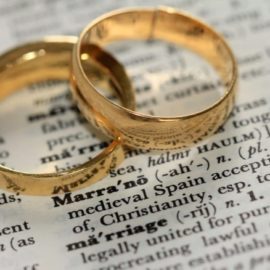

This article is an excerpt from the Shortform book guide to "So You've Been Publicly Shamed" by Jon Ronson. Shortform has the world's best summaries and analyses of books you should be reading.
Like this article? Sign up for a free trial here .
Who invented the group madness theory? Why do people behave irrationally—even violently—when in a crowd?
Group madness is the idea that people lose their free will, reasoning, and restraint when in a crowd—everyone goes mad all at once and there’s no ideological motivation or justification involved. Group madness theory was invented by nineteenth-century French polymath Gustave LeBon.
Keep reading to learn about Gustagrve LeBon’s group madness theory.
What Is Group Madness?
Group madness is the idea that when in a crowd, people lose their individuality and do things they never would have considered on their own, such as destroy property. It’s not a very robust theory because the inventor made it up to serve his own ends, the most famous experiment proving its existence used questionable methodology, and there’s plenty of evidence that conflicts with the theory.
The Inventor: Gustave LeBon
Group madness was invented in the nineteenth century by Frenchman Gustave LeBon. Crowds were of particular interest in France at the time because the elite was worried about uprisings against them. (Napoleon III even tried to use urban planning to control crowds by replacing medieval streets with wide boulevards.)
LeBon tried to scientifically prove the idea of group madness. He was enamored with the elites of Paris society and thought that they might welcome him into their circles if he could give them a way to manage the madness.
LeBon’s science involved looking at skulls held by the Anthropological Society of Paris and measuring their volume as a proxy for brain size. He concluded that businessmen and aristocrats had the biggest brains and were therefore less susceptible to madness. He decided the brains of Black people and women were lighter to explain why people with the same-sized heads wouldn’t have the same-sized brains. He wrote a paper about his theories in 1879 that went over very badly. The Anthropological Society of Paris was highly suspicious of LeBon’s conclusions because his scientific methods were so sloppy and he was so misogynistic.
LeBon went to Arabia to study Arabians’ racial characteristics and over the next years and wrote and self-published several books. These books weren’t based on any experimentation— he just wrote down what he thought. In 1895, he published The Crowd, which explained his group madness theory. It contained two tantalizing ideas:
- Mass revolutionary movements (like feminism) were all madness; morality played no part, so such movements could just be ignored.
- A good speaker could learn to control a crowd by affirming their beliefs, exaggerating, and using repetition but never logic.
The Crowd was very popular and was translated into 26 languages. Mussolini and Goebbels both endorsed the book. LeBon earned himself a place in the Parisian society but acted very strangely—during lunches he hosted, if someone said something he didn’t like, he’d ring a bell until the speaker went quiet.
Even though the group madness theory was made up and endorsed by people generally considered immoral, and everyone thought LeBon was socially awkward, it still persisted.

———End of Preview———
Like what you just read? Read the rest of the world's best book summary and analysis of Jon Ronson's "So You've Been Publicly Shamed" at Shortform .
Here's what you'll find in our full So You've Been Publicly Shamed summary :
- How public shaming can ruin people's lives
- Why public shaming isn't just a way to get corporations to do the "right thing"
- 6 strategies you can use if you're a victim of public shaming






